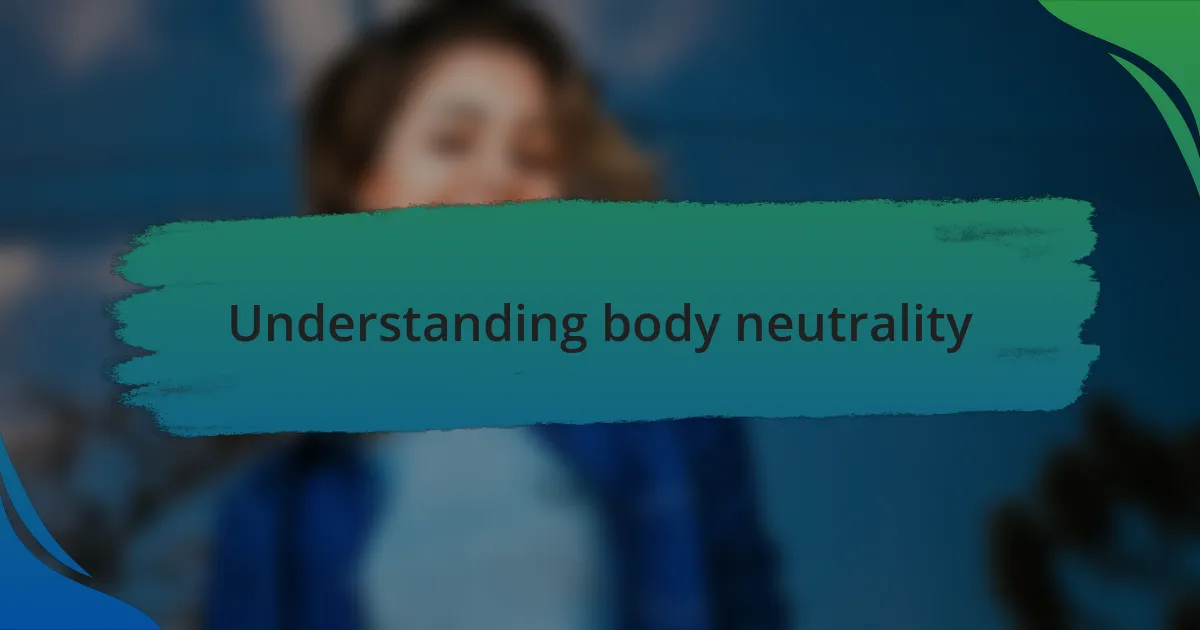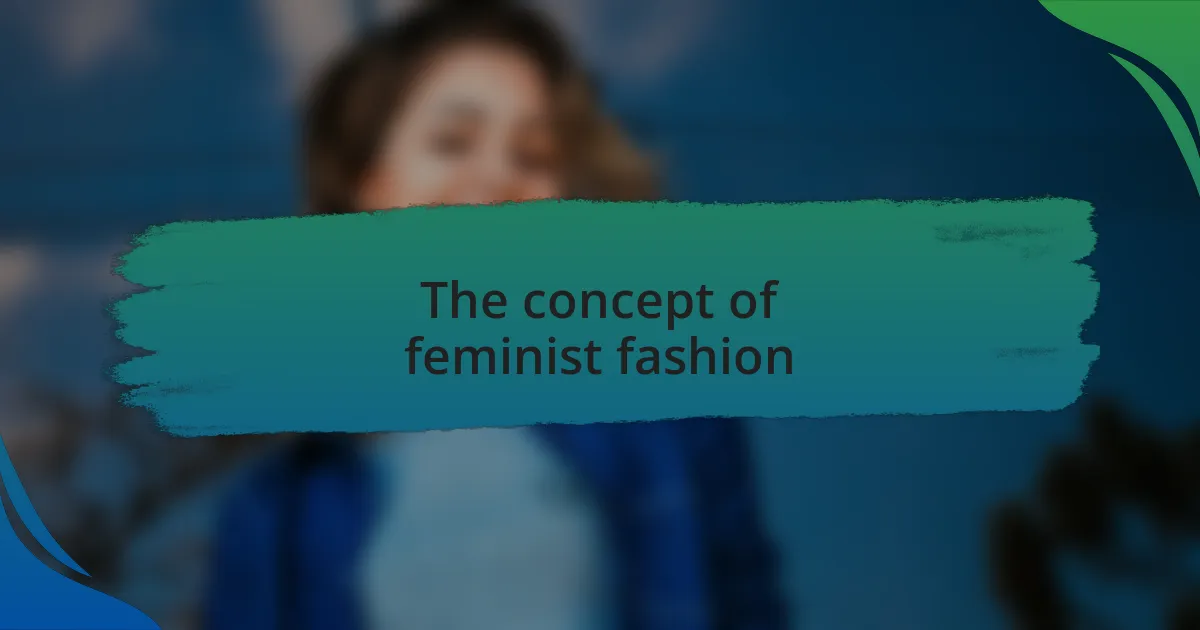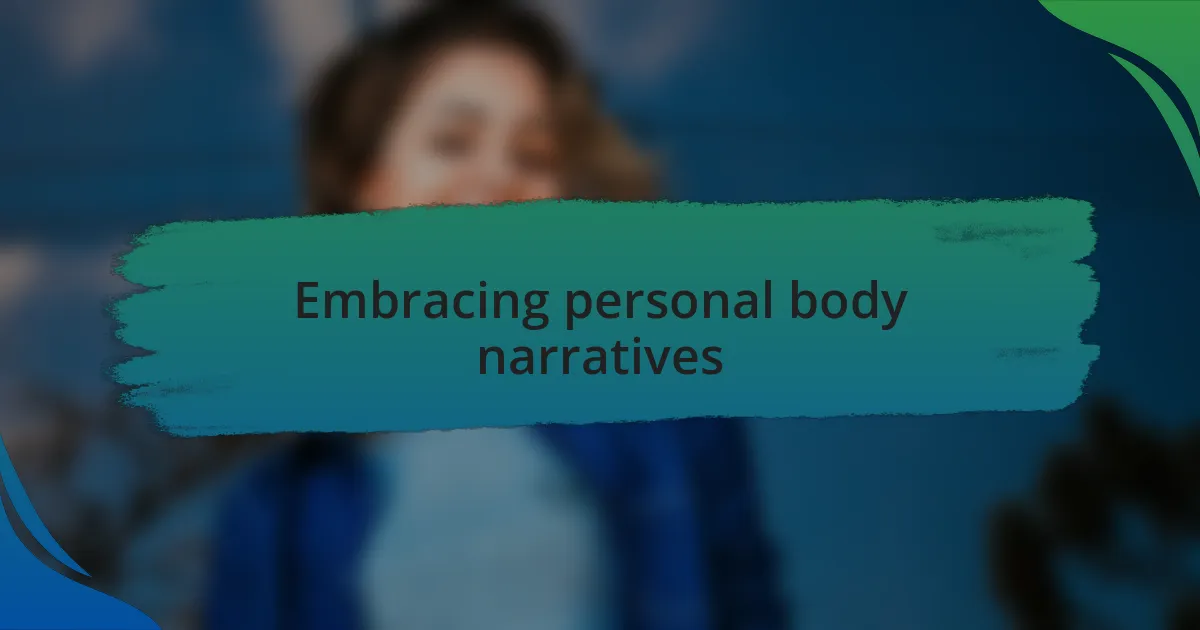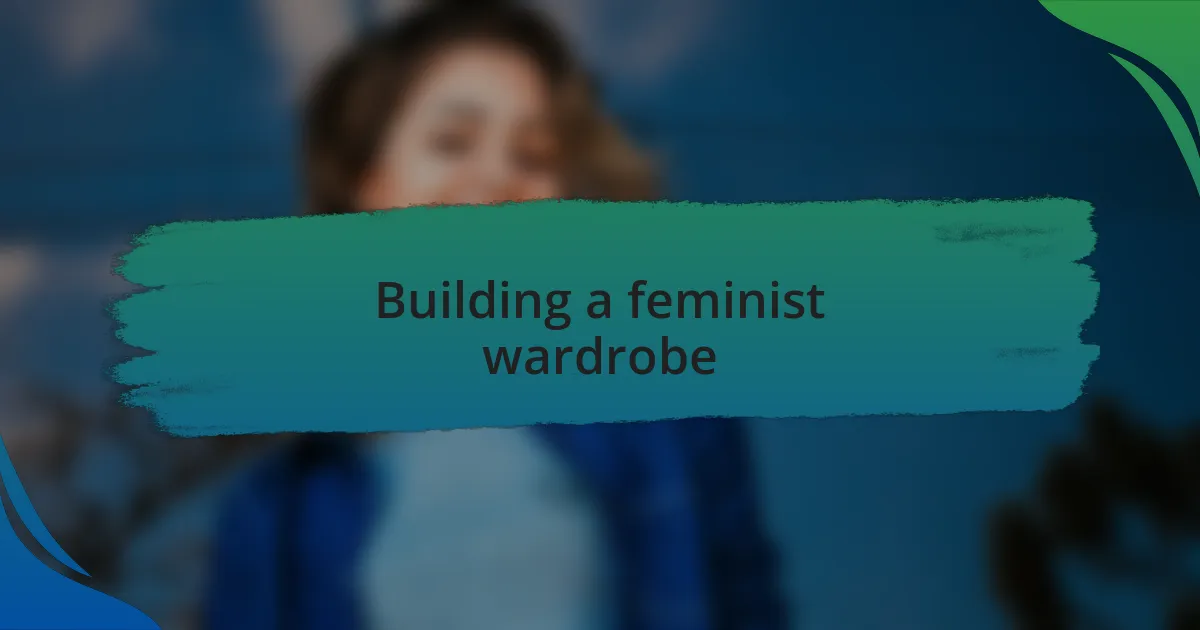Key takeaways:
- Body neutrality emphasizes functionality over appearance, fostering self-worth independent of physical looks.
- Feminist fashion promotes inclusivity and challenges beauty standards, encouraging self-expression and awareness of socio-political implications.
- Historical context shows how societal standards of beauty have evolved, impacting women’s self-esteem and perceptions today.
- Building a feminist wardrobe involves intentional choices that align with personal values, celebrate body diversity, and empower marginalized creators.

Understanding body neutrality
Body neutrality is a concept that shifts the focus from appearance to functionality. It encourages us to appreciate our bodies for what they can do rather than how they look. I remember a time when I finished a challenging hike. Instead of worrying about whether my thighs looked thick in my leggings, I felt proud of my legs for carrying me up the mountain. Doesn’t that feeling of achievement resonate more than any number on a scale?
Understanding body neutrality also means recognizing that self-worth isn’t tied to physical appearance. I think about how often we praise someone for their looks rather than their qualities or accomplishments. Have you ever caught yourself doing this? By prioritizing gratitude for our bodies’ abilities, we create a healthier and more empowering narrative.
Ultimately, body neutrality invites us to adopt a mindset that celebrates existence over aesthetics. I find solace in this perspective, especially on days when I struggle with body image. What if we all embraced our bodies as instruments of experience rather than objects of scrutiny? By fostering this mindset, we can cultivate a sense of peace and acceptance that transcends societal expectations.

The concept of feminist fashion
Feminist fashion challenges conventional beauty standards and promotes inclusivity across all body types, redefining how we perceive clothing and self-expression. I often find myself drawn to brands that prioritize ethical practices and size diversity, creating garments that empower all women rather than conforming to a narrow ideal. Isn’t it refreshing to wear clothes that celebrate who we are, rather than who society wants us to be?
Moreover, feminist fashion encourages us to question the socio-political implications of what we wear. I remember browsing through a collection that showcased designs inspired by powerful women throughout history. This not only sparked dialogue about representation but made me reflect on how my clothing choices could convey my values and beliefs. I often ask myself: can fashion be a form of protest? In my experience, it absolutely can.
Ultimately, embracing feminist fashion allows for a personal exploration of identity and self-worth. Each piece I choose becomes a statement—an assertion of my autonomy in a world that often dictates how women should look. Have you ever considered how your wardrobe reflects your personal journey? It’s a beautiful way to express individuality while standing in solidarity with others who seek to challenge the status quo.

Historical context of body image
Understanding the historical context of body image reveals how societal standards have evolved over time. For instance, in the Victorian era, a woman’s worth was often tied to her physical attributes, with corsets emphasizing an impossible hourglass figure. Reflecting on this, I can’t help but wonder how many women felt trapped by such rigid expectations and how this pressure still lingers today.
In the 1920s, flapper culture emerged, challenging the previous ideals of femininity by celebrating a more androgynous look. I find it fascinating how this shift allowed women to express freedom and rebellion against conventions. It makes me think: how far have we come since then? While we’ve made strides, the remnants of past ideals can still shape our perceptions of ourselves and others in profound ways.
As the decades passed, media portrayal of body image became more pervasive, driven by advertising and popular culture. I remember flipping through magazines as a teenager and feeling a mix of admiration and inadequacy while gazing at images of models who seemed to embody an unattainable perfection. This experience leads me to ask, how do these portrayals impact our self-esteem today? It’s essential to recognize the influence of these narratives as we cultivate a more body-positive and inclusive perspective.

Embracing personal body narratives
Embracing our personal body narratives means recognizing the stories we tell ourselves about our bodies. I often reflect on the various phases of my own self-image; there were times when I celebrated my curves and other times when I wished to be someone else entirely. Isn’t it interesting how our narratives shift with our experiences, influencing our self-acceptance?
The journey to body neutrality often starts with unpacking these narratives. I recall a moment when I decided to write down my body-related experiences, both positive and negative. It was liberating to untangle my thoughts and see how external influences shaped my perception. Have you ever considered how powerful your own story could be in redefining your relationship with your body?
As I embrace body neutrality, it’s empowering to assert that my body does not define me; rather, it’s a small part of my broader story. When I look in the mirror now, I strive to appreciate my body for its strength and resilience, not just its appearance. How have your perceptions changed when you focus on the narrative rather than the number on a scale? This shift can pave the way for deeper self-acceptance and understanding.

Building a feminist wardrobe
Building a feminist wardrobe goes beyond simply choosing clothing; it’s about making intentional choices that align with your values. I remember when I started considering the stories behind my clothes, realizing how often I wore items just because they were trendy rather than because they resonated with who I am. Have you ever looked at a piece of clothing and questioned its journey before it reached your closet?
I find that prioritizing sustainable, ethically produced fashion not only contributes to the planet’s well-being but also empowers the voices of marginalized creators. For instance, I made the shift to support local artisans whose work reflects a commitment to social justice. It was eye-opening to see how much more meaningful my wardrobe became when each piece told a story of resilience and empowerment.
Growing a feminist wardrobe also means celebrating body diversity by choosing styles that make you feel comfortable and authentic. I used to feel pressured to fit into specific sizes or silhouettes, but now I gravitate towards pieces that honor my shape and make me feel confident. What if we all embraced that freedom to dress for ourselves rather than for societal standards? In doing so, we not only uplift our individual narratives but also inspire others to embrace their authentic selves.